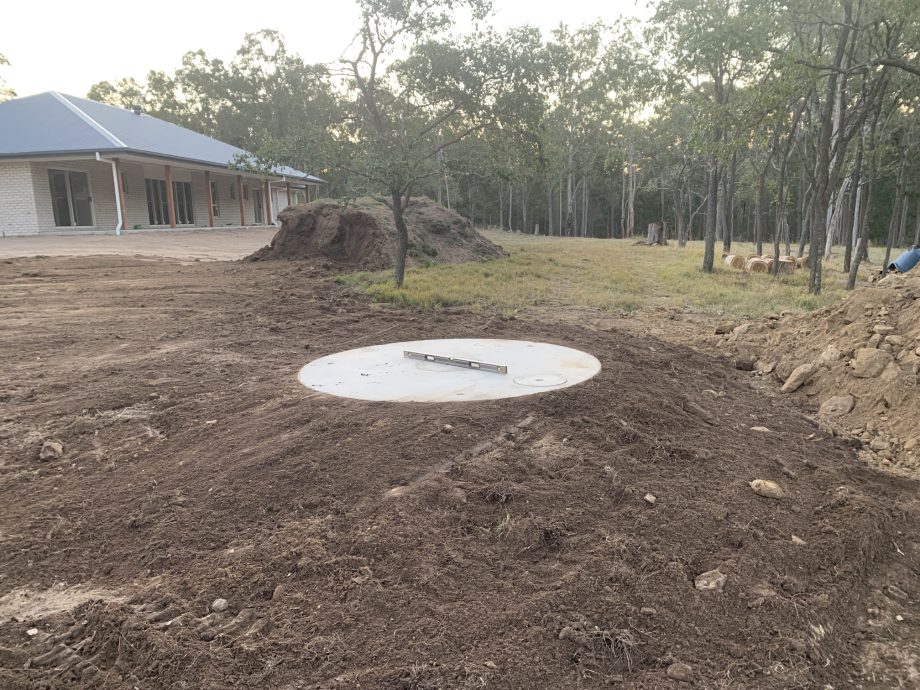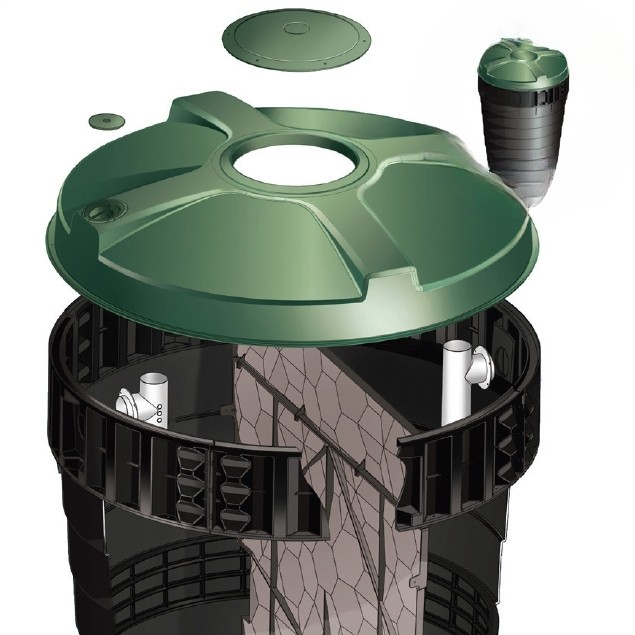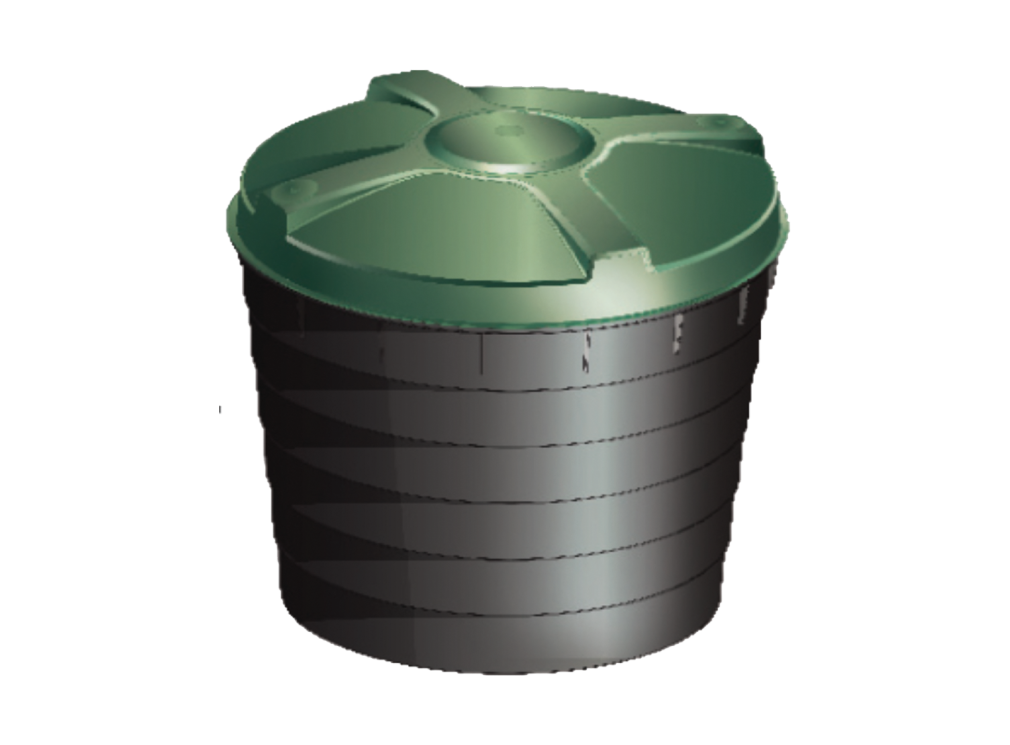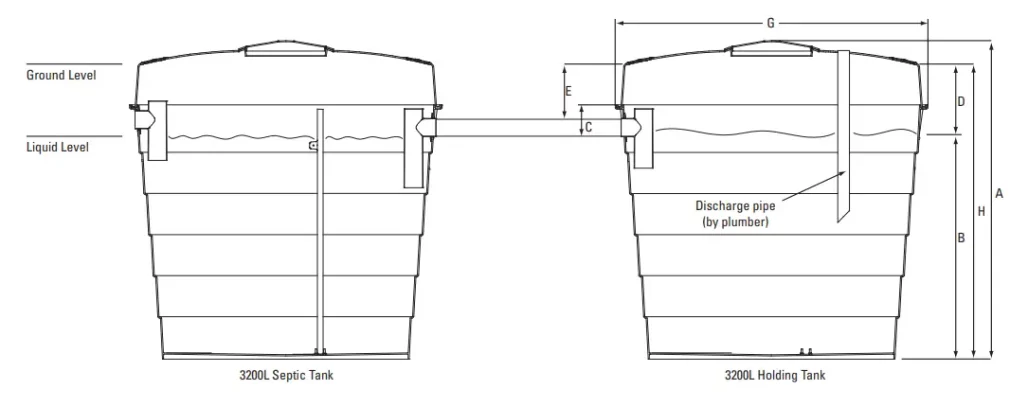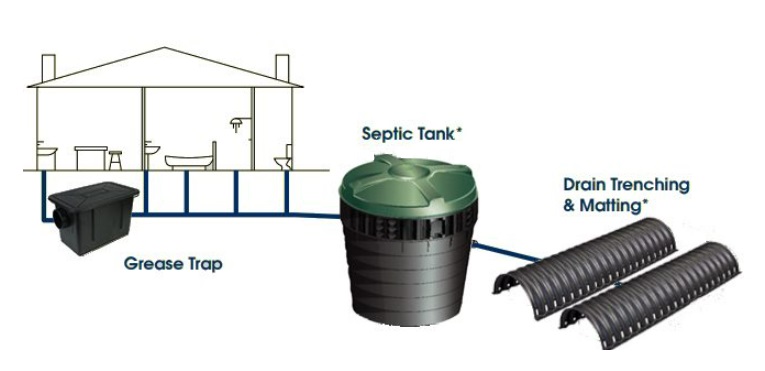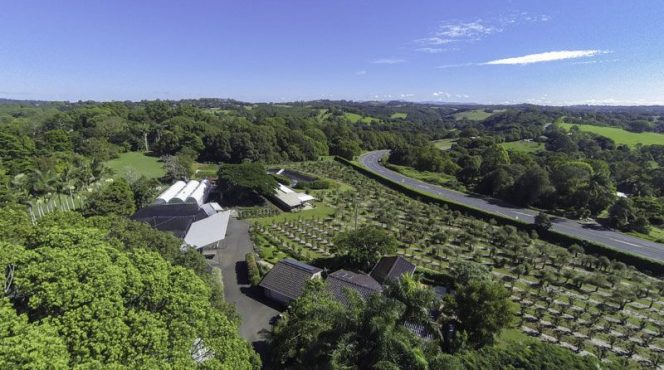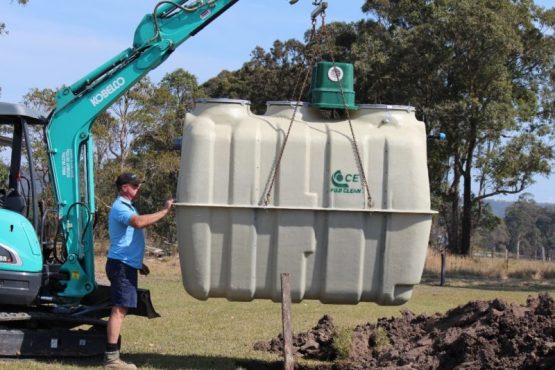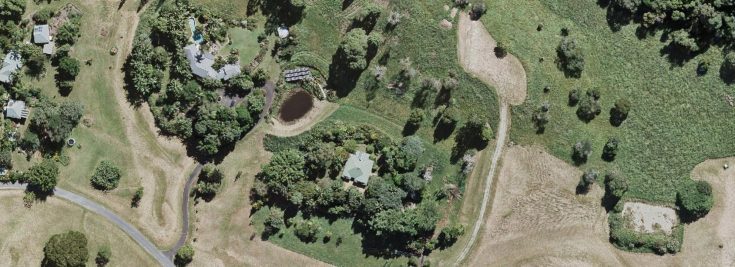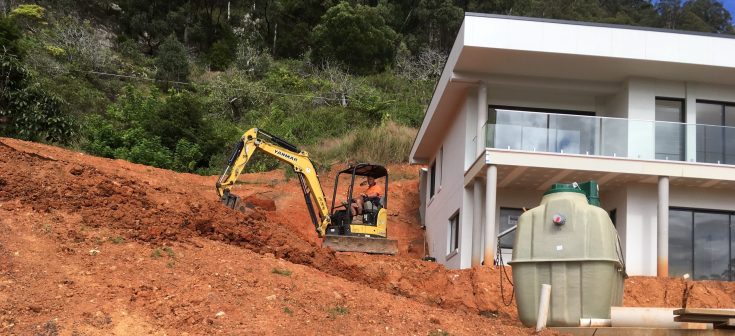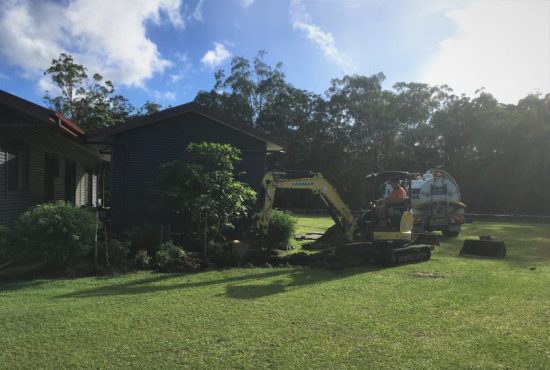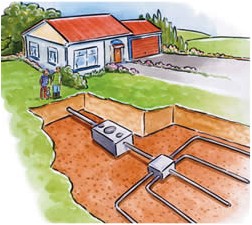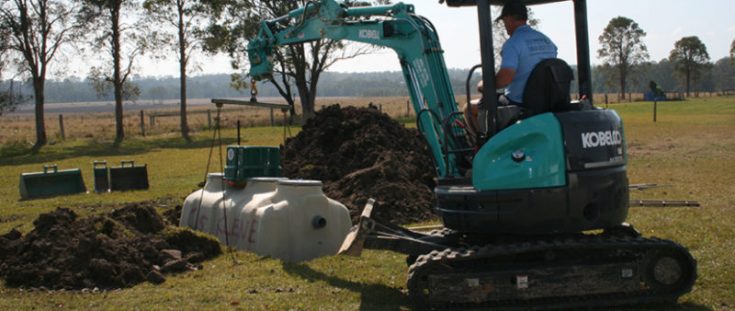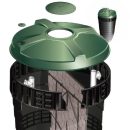



Septic Tank – Primary Treatment
Septic tanks provide a basic or “primary” level of wastewater treatment.
Septic systems include a primary tank and absorption trenches which utilise microbial processing and solid separation, which can be gravity-fed or pump-based, depending on the features of your location. They are commonly used in agricultural or simple large-lot locations where there are no constraints for the treatment and dispersal of wastewater.
Primary treatment is achieved using a conventional septic system.
Septic tanks were once the mainstay of household wastewater treatment. Although less commonly used, they are certainly still a viable option in the right location. Suitability depends on environmental factors like proximity to waterways, depth of groundwater, and local regulations.
Well-maintained systems can last for decades with minimal servicing requirements. However, they must be pumped out regularly to ensure they keep functioning properly. These traditional tanks capture and store household sewage, which goes through a separation and settling process. Organic material sinks to the bottom and forms a sludge that needs to be pumped out every few years. Oils and grease float to the top and form a scum layer, while the wastewater is dispersed to trenches.
The good bacteria that inhabit the tank digest and treat the wastewater from your kitchen, bathroom, laundry, and toilet. Septic tanks are an affordable solution for home sewage treatment and can be the best option for homes on large parcels of land. They can also be used as part of a comprehensive treatment solution that requires several steps of treatment.
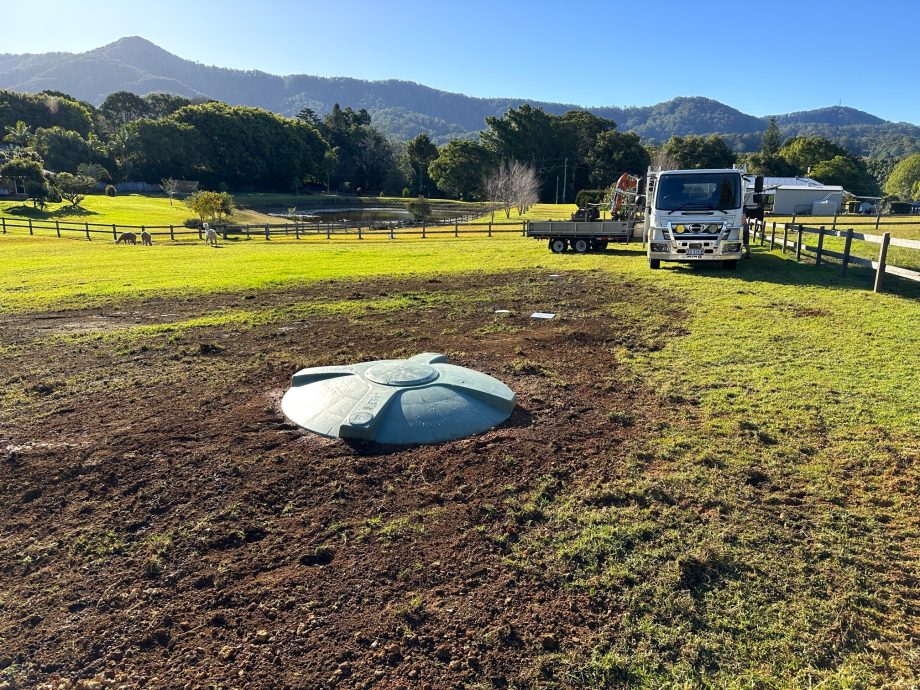
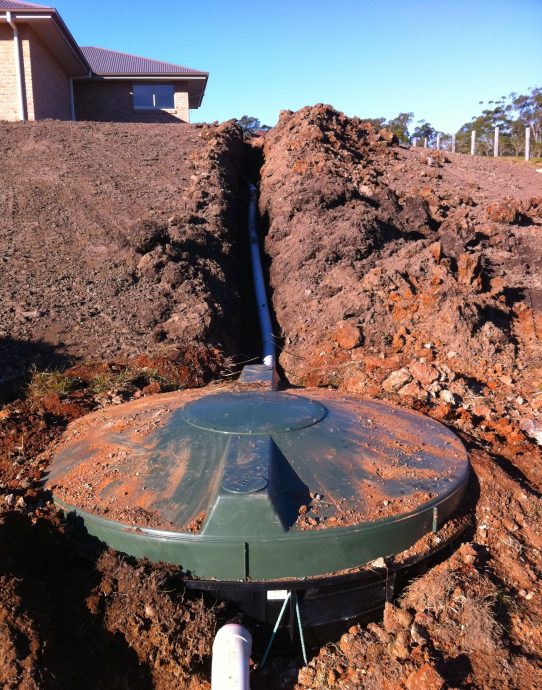
Polymer tanks are the most commonly used septic option.
True Water offers installation services for polymer and concrete septic tanks per the property and homeowner requirements. Plastic or polymer septic tanks are the most common septic tank option, while concrete septic tanks are still used occasionally.
These primary treatment systems are available in different sizes to accommodate houses of varying sizes. The ribbed design of polymer tanks provides excellent strength while remaining lightweight and durable. UV-protected lids ensure the systems can withstand exposure to the Australian sun.
Polymer tanks are also a more popular option because they allow for the inclusion of “risers” for flexible installation. These large-diameter collars extend from the access port of a septic tank to the ground above, making it easy to access the system for inspection, maintenance, and sludge removal.
Concrete tanks are heavier and bulkier than polymer tanks. Their weight and structural strength are particularly useful in locations with high water tables or to combat specific soil type limitations.
Septic tanks and the bigger picture.
Septic tanks require council authorisation. True Water can assist with all necessary regulatory approvals, system supply, and septic tank installation. Once household sewage has been treated by a septic tank, it drains via gravity to the Land Application Area (LAA) or Effluent Dispersal Area (EDA) which is Evapotranspiration Absorption (ETA) beds.
The LAA is installed at the same time as the septic tank and completes the entire Wastewater Treatment System (WWTS). It is important to note that the septic treatment process involves solid separation and removing sludge and solids is critical for avoiding damage. Septage that exceeds the recommended levels will eventually work its way through to the LAA.
Warning signs of critical failure include the inability to properly flush toilets, unpleasant odours, and the presence of vermin and insects. It is recommended that septic tanks be pumped out every two to five years. It is also important to remember to use septic-safe cleaning products and not dispose of rubbish or food waste down drains or toilets.
